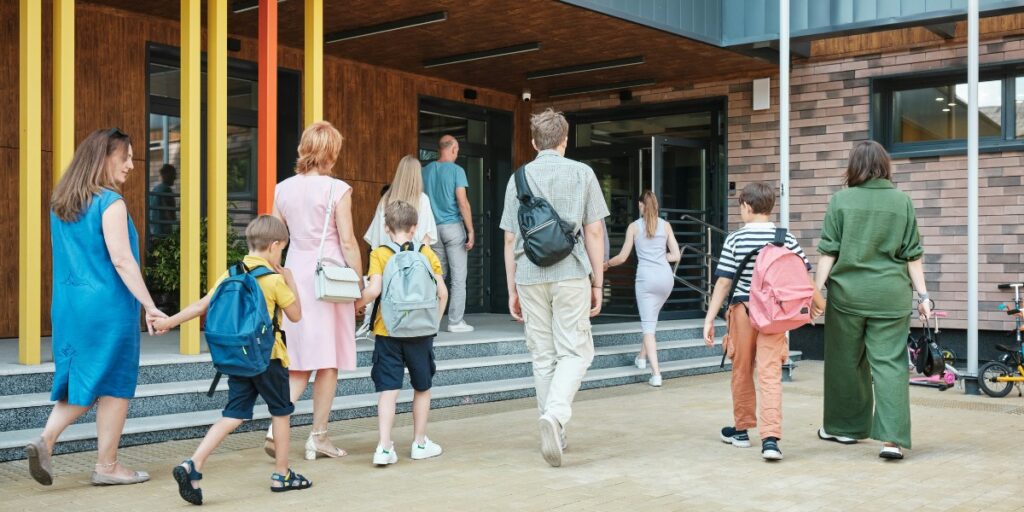The science behind biophilic office spaces reflects a growing interest in how the built environment interacts with human physiology and psychology. In recent years, designers and researchers have examined how integrating natural elements into indoor work environments may influence stress, focus, and overall wellbeing. While research continues to evolve, studies suggest that thoughtfully applied biophilic design features can affect how individuals experience and respond to their workspace.
Biophilic office spaces typically include elements such as natural lighting, greenery, natural materials, and layouts that promote connection to outdoor views. These features are not only aesthetic choices but are increasingly viewed as part of a broader effort to support healthier and more adaptive working conditions.
Read also: Green Spaces in Dallas: Why Nature Matters to City Life
What Is Biophilic Design and How Did It Enter the Workplace?
Biophilic design is based on the idea that humans benefit from a connection to nature, even when indoors. The term is often linked to concepts in environmental psychology and architectural design, where the goal is to incorporate features that reflect patterns, materials, and systems found in the natural world.
In workplace settings, this approach has emerged as a response to growing concerns about employee wellbeing and the limitations of conventional office design. As more people spend extended hours indoors, designers and employers have explored ways to reduce mental fatigue, improve comfort, and create spaces that align more closely with biological needs.
Though interest in nature-based design is not new, recent developments in neuroscience, building technology, and environmental monitoring have enabled a more research-driven approach. The shift toward hybrid work models has also prompted organizations to reassess how physical spaces contribute to focus, collaboration, and psychological resilience.
How Might Natural Light Influence Alertness and Cognitive Rhythm?
Access to natural daylight has been linked to circadian regulation, which affects sleep cycles, mood, and attention. In office environments, exposure to daylight throughout the day may help align internal biological clocks with working hours, potentially supporting more stable patterns of alertness and rest.
Research indicates that individuals working near windows often report higher satisfaction with their environment and may experience fewer physical complaints such as eyestrain or headaches. While outcomes vary based on individual preferences and building orientation, exposure to daylight is generally viewed as a favorable design element in biophilic spaces.
Where direct daylight is limited, dynamic lighting systems that adjust brightness and tone across the day are sometimes used to mimic natural cycles. These systems attempt to simulate outdoor light variation, though their effectiveness depends on how they are integrated and perceived by occupants.
How Do Plants and Green Features Contribute to Interior Environments?
Live plants are among the most common features in biophilic office spaces. In addition to their visual appeal, plants may support indoor air quality, provide subtle humidity regulation, and contribute to a more layered sensory experience. Some research has explored whether the presence of greenery can reduce indicators of stress or increase perceived calm, although findings vary depending on species, placement, and context.
Beyond live vegetation, other green features—such as green walls, preserved moss panels, or views of nearby natural landscapes—can offer similar psychological cues. These elements are typically included to create a sense of natural variation and texture, offering relief from the flat surfaces and monotone colors often found in enclosed office settings.
When selecting plant types or green features, environmental factors such as lighting, maintenance requirements, and spatial flow are often considered. The goal is not just decoration, but a balanced integration that supports both visual diversity and practical function.
What Role Do Natural Materials and Sensory Texture Play?
Materials used in office interiors can influence how a space is perceived. Surfaces made of wood, stone, or natural textiles often have different tactile and acoustic qualities than synthetic materials. In biophilic design, these features are used to evoke familiarity or a connection to the environment outside.
Studies suggest that environments incorporating natural materials may be associated with improved subjective comfort or lower levels of reported stress. These effects may relate to how such materials engage the senses or interrupt patterns of sensory fatigue common in high-density office layouts.
In addition to material selection, design often includes curved or irregular forms, which reflect the non-linear structures found in nature. These shapes may promote visual exploration and may reduce feelings of confinement, particularly in open-plan or high-traffic areas.
How Can Layout and Visual Access to Nature Affect Experience?
Sightlines and spatial orientation can influence how individuals move through and experience a workspace. Offices that allow views of outdoor vegetation, sky, or water features may promote a sense of openness and orientation. In areas where outdoor views are limited, interior elements—such as natural murals or indoor water installations—may be used to approximate these effects.
Visual access to nature, even through imagery or design cues, has been associated with reduced attention fatigue and more positive self-reports of focus. These effects tend to be subtle and are often cumulative, depending on duration of exposure and task type.
Layout decisions also shape how movement and rest are accommodated. Spaces that support variation—quiet corners, collaborative areas, and casual seating—offer flexibility that may align with varying energy levels throughout the day. The ability to choose where and how to work may contribute to a greater sense of agency, which is sometimes linked to satisfaction and reduced stress.
What Does Research Suggest About Outcomes in Biophilic Workspaces?
While biophilic design continues to be studied, a number of empirical findings suggest potential links between nature-inspired elements and various cognitive or emotional responses. Some studies have reported improvements in short-term memory or task persistence following exposure to natural stimuli. Others have documented lower levels of self-reported tension or increased levels of perceived creativity in environments with plants or natural light.
That said, effects are often influenced by contextual variables. These include task complexity, personal preferences, baseline environmental quality, and cultural expectations. Not all biophilic interventions yield measurable outcomes, and individual responses can differ significantly.
Survey-based research has found that employees often associate biophilic features with comfort and workplace quality. While these perceptions may not always correspond directly with productivity metrics, they are considered relevant to retention, engagement, and overall organizational climate.
What Practical Considerations Influence Implementation?
Incorporating biophilic elements into offices often involves balancing ambition with feasibility. Live vegetation requires upkeep, and certain design features—such as large windows or green roofs—may be limited by existing infrastructure or climate.
Budget constraints can also shape decisions. While some organizations invest in full-scale redesigns, others take a phased approach, introducing elements gradually. Portable planters, removable partitions with natural textures, or lighting upgrades are sometimes used as entry points.
Cultural alignment is another factor. Biophilic design tends to be most effective when it reflects the specific values and practices of a given workplace, rather than being applied as a generic overlay. Staff involvement in planning, feedback loops, and ongoing maintenance may support greater acceptance and sustainability.
Read also: Smart Cities: Enhancing Sustainability and Efficiency
How Might Biophilic Design Adapt in a Hybrid Work Era?
As hybrid work patterns continue, the role of office space is being reevaluated. Physical environments are increasingly expected to support not just efficiency but also wellbeing, identity, and connection. In this context, biophilic design may play a part in creating spaces that people choose to return to.
Workplaces that foster sensory engagement, restfulness, and natural variation may offer a contrast to remote work setups, especially in urban areas where access to green space is limited. The use of plants, natural light, and adaptable space may also support collaboration and informal gathering, particularly in work cultures focused on flexibility and creativity.
Future applications of biophilic design are likely to draw on interdisciplinary insights—from neuroscience to environmental psychology—and may continue to evolve as new materials and spatial tools become available. While not a universal solution, biophilic office design remains an area of interest for organizations exploring how physical environments intersect with human needs.















